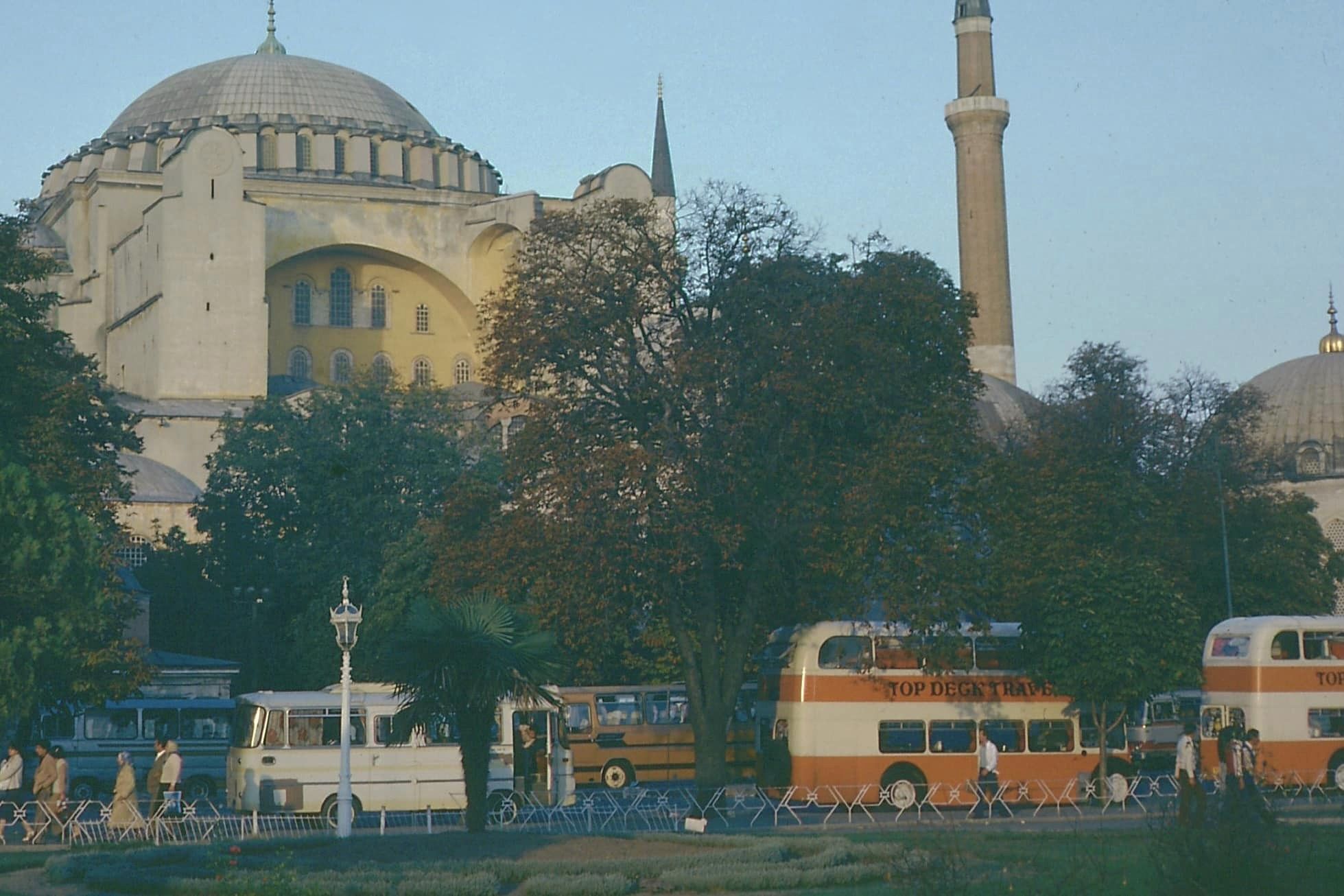
AsianOverland.net
Tour Guide - Itinerary
Asian Overland Sydney to London
Started 22/06/2022 Finished 21/06/2023365 Days ITINERARY
Day 275 date 23/03/2023ISTANBUL to TOPKAPI PALACE, TURKIYE
ASIANOVERLAND.NET SYDNEY TO LONDON DAY 275/151/63: ISTANBUL TO TOPKAPI PALACE, TURKIYE
28 June and 19 November, 1980
The Topkapı Palace in Istanbul is one of my three favourite museums, along with the Louvre in Paris and the Hermitage in St Petersberg. It is full of ostentatious wealth, jewellery, thrones, cribs, swords and daggers made of gold, embedded with precious gemstones, diamonds, topaz, emeralds, rubies, jade and any other gemstone you could imagine.
In the 15th and 16th centuries Topkapi Palace served as the main residence and administrative headquarters of the Ottoman sultans.
Construction began in 1459 on the order of the Sultan Mehmed the Conqueror, six years after his conquest of Constantinople. Topkapı was originally called the "New Palace" to distinguish it from the Old Palace in Beyazıt Square, and renamed Topkapı, meaning Cannon Gate, in the 19th century.
The Palace expanded over the centuries, with major renovations after the 1509 earthquake and the 1665 fire. The palace consists of four main courtyards and many smaller buildings. Female members of the Sultan's family lived in the harem, with 365 bedrooms. Leading state officials held meetings in the Imperial Council building.
The main Palace entrance separates the Harem in which the family and the concubines of the sultan resided, from the Courtyard of the Eunuchs.
The Courtyard of the Sultan's Consorts and the Concubines was constructed in the middle of the 16th century. The three independent tiled apartments with fireplaces overlooking the Golden Horn were the quarters where the consorts of the Sultan lived. The staircase called the "Forty Steps" leads to the Hospital of the Harem , the dormitories of the concubines at the basement of the Harem and Harem Gardens.
The Imperial Harem of the Ottoman Empire was composed of the wives, servants (both female slaves and eunuchs), female relatives and the sultan's concubines – occupying a secluded portion of the Topkapi Palace. The Harem played an important social function within the Ottoman court, and wielded political authority in Ottoman affairs, especially during the long period known as the Sultanate of Women (1533 to 1656). The highest authority in the Imperial Harem, the valide sultan, ruled over the other women in the household, and was often of slave origin herself.
The Harem was the ultimate symbol of the Sultan's power, his ownership of women being a sign of wealth, power, and sexual prowess. The main wives, especially those taken into marriage to consolidate personal and dynastic alliances from far flung provinces of the ever-expanding Ottoman Empire, were free women.
The Imperial Harem served as a parallel institution to the sultan's household of male servants. The women were provided with an education on par with that provided to male pages, and at the end of their educations, could be married off to one another, as they graduated from the palace to occupy administrative posts in the empire's provinces.
After the end of the Ottoman Empire in 1923, the new Attaturk-led Turkish government transformed Topkapı into a museum, so we could all visit.
The nightlife in Istanbul is great, with cultural evenings and dinners with belly dancers evoking the Ottoman era.
© This work is copyright. Apart from any use permitted under the Copyright Act 1968, no part may be reproduced by any process, nor may any other exclusive right be exercised, without the permission of Peter Searle, peter@portseavillageresort.com; 1980-2024.
Website built by Justin O’Dea www.webdeveloperdocklands.com.au




